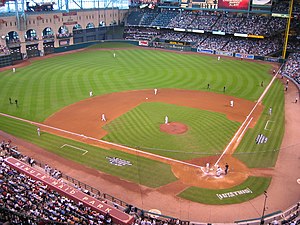Ncaa Softball Umpire Mechanics Manual For A Mazda
The Collegiate Softball Umpires. The umpires' rules and mechanics test are for those CSUA and ECUA umpires that are NOT registering for the NCAA SUP. News and Announcements. On page 11 in our 2018 Softball Umpire Manual and page 105 in the. NCAA Softball Rules and Mechanics Test will be. Cooperative Marine Turtle Tagging Program on this page.


NCAA NCAA Baseball Umpire Program 2011 INFORMATION 2011 NCAA Baseball Umpire Site The NCAA web site for umpire related information a calendar of events, world series information, FAQ's and more. NCAA 2011 Baseball Umpires' Manual The Collegiate Commissioners Association has released the 2011 updated Official umpire mechanics manual for 2, 3, 4 and 6 man crews. All NCAA Division I conferences have adapted these mechanics for the 2011 season Click here for more details NCAA Conference Umpire Contact List Please see the chart below for the appropriate contact information. Updated 1/22/2009.
This week we would like to revisit the obstruction rule (9.5. Disco Protetto Da Scrittura Rimuovere Protezione Vista. 1) concerning a runner advancing or returning to a base. See the situations below: - The fielder cannot position themselves in a manner that blocks the whole base/plate or base path without possession of the ball (consider fielder’s entire body). A straddle position on the base path side of the bag may present an opening to the bag with a slide between the feet/legs; however, the positioning of the upper body is blocking the whole base/plate or base path – This is obstruction. How To Activate Free Credit Three. If the fielder moves to a position to catch a thrown ball and she blocks the base path or plate/base without the ball – This is obstruction. - If the fielder’s initial setup for play does not violate blocking the whole base/plate or base path and the catch or attempted catch of a thrown ball moves the fielder through the baserunner’s path to a new position and: (1) fielder obtains possession of ball before contact with runner – This ‘is not’ obstruction; (2) fielder contacts runner before possession of ball – This ‘ is’ obstruction. - If the fielder is not in violation of blocking the whole base/plate or base path, but she impedes the runner (who is running the bases legally on a live ball) with physical contact without the ball – This is obstruction.
- If the fielder is blocking the whole base/plate or base path and the runner is “clearly beaten by the throw”, obstruction is not called and the runner may be ruled out on the play. The guidelines for “clearly beaten by the throw” are: (1) runners position is where she could not begin her slide, (2) fielder must wait on her to arrive to apply the tag or (3) she gives herself up. - Rundowns are dynamic plays with runners creating new base paths and fielders moving to make a play. Obstruction may develop if a defensive player physically impedes the runner or blocks the whole base path and she is not in possession of the ball or if defensive player is blocking the whole base without possession of the ball as the runner approaches that base. Please consider the priorities of viewing a ‘ possible obstruction play’ this way: as the play begins the umpire should choose a proper angle which will allow a view of the defensive player’s positioning, then ‘continuously’ shifting focus between: (1) defensive player’s position, (2) status of ball, (3) status of runner, (4) then as possession of the ball occurs by the defensive player, the eyes focus along with umpire movement to see the tag of the runner by the fielder and runner’s touch of base/plate. My main point is you have to continue viewing the play for obstruction until there is possession of the ball by the fielder.
The umpire must be confident that obstruction occurs before making the obstruction call: ‘no probably so’ or ‘more than likely’, we must be ‘sure.’ To do this umpires must know and understand the obstruction rule and be able to rule on it during the course of play. Please stay tuned as we will post videos illustrating obstruction plays from this past week to further help you understand how to enforce this rule Craig Hyde, NCAA National Umpire Coordinator Vickie Van Kleeck, NCAA Softball Secretary Rules Editor •. Dear Umpires, Week two is in the books, again umpiring was solid. Feedback – Adjustments – Guidance: - Strike Zone – continue accuracy focus, call the defined zone.